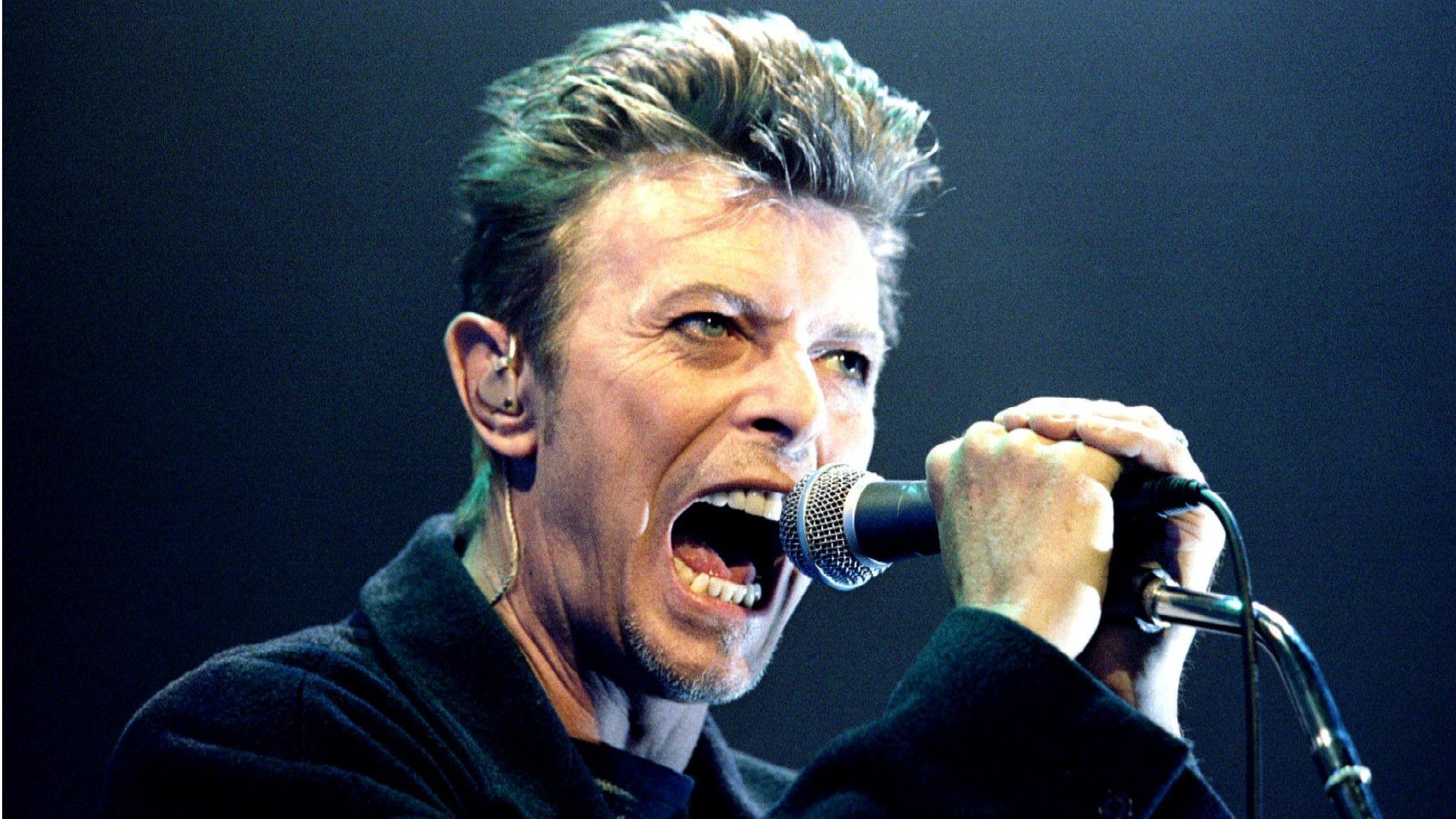David Bowie: Ten things we've learned since his death
- Published
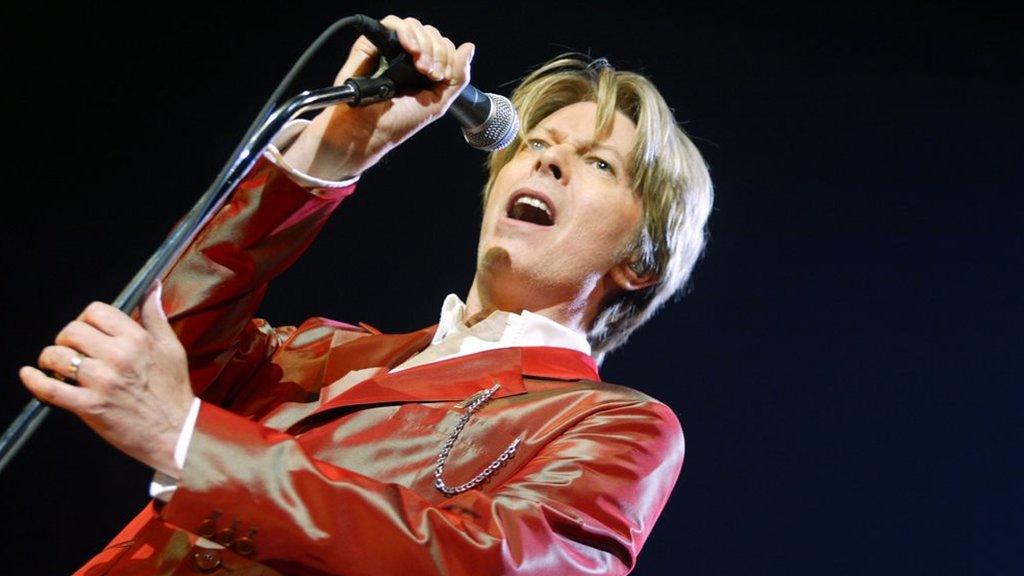
David Bowie: One of the defining artists of his generation
It's one year since music legend David Bowie died of cancer.
The musician died two days after his 69th birthday, having kept his illness hidden from everyone except his family and closest collaborators.
He had only just released his 25th album, Blackstar, which came to be seen as his "parting gift" to fans, reflecting as it did on themes of mortality and decay.
It was a typically adventurous and enigmatic record from a musician who maintained a sense of mystery throughout his career.
Since his death, however, fans have been afforded the occasional glimpse into his creative life - all of which elevate his status as a visionary, musical genius and humanitarian.
Here are 10 things we've learned in the last 12 months.

1) He wanted his ashes scattered in Bali


Bowie was cremated in private last January. In accordance with his wishes, no family or friends were present at the ceremony, and the whereabouts of his ashes remain a secret.
His son Duncan Jones denied a rumour they had been spread at the Burning Man festival in Nevada, adding that if his father's ashes were to be scattered in public, "it would be at the Skegness Butlins, external".
However, according to Bowie's will, external, which was filed in New York on 29 January, the star wanted his ashes scattered in Indonesia "in accordance with the Buddhist rituals of Bali".

2) He worried about how Blackstar would be received


For his final album, Bowie dispensed with his regular band and hired a group of young jazz musicians to push his music in a new direction. It was adventurous and exciting, but the star wasn't sure how fans would react.
"He was nervous it wasn't a good album," said Jonathan Barnbrook, who designed the sleeve.
Speaking of which...

3) The artwork for Blackstar was a comment on mortality

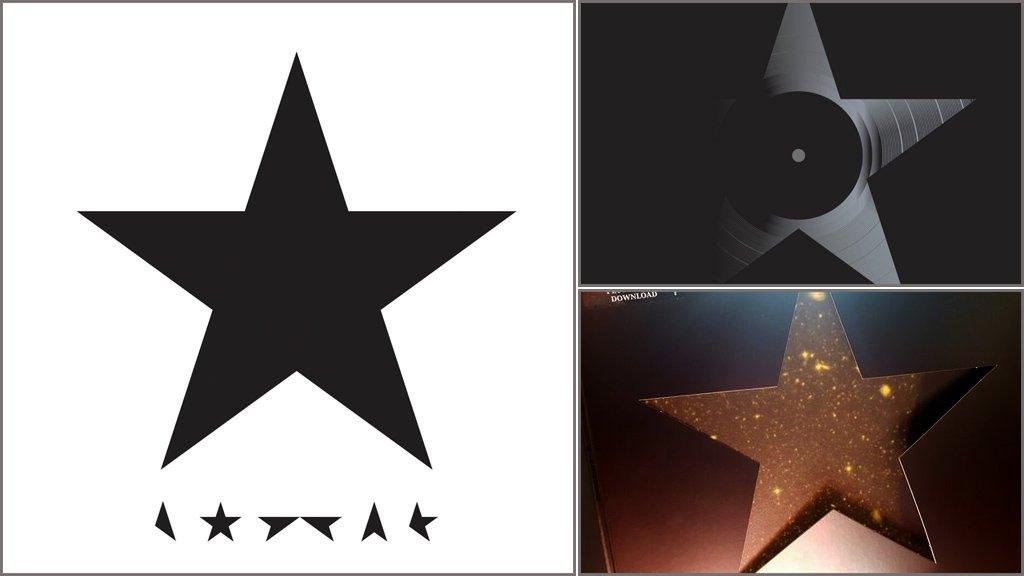
The title of Bowie's last album suggests a light flickering out, while the video for Blackstar features a skeleton inside a spacesuit that is "100% Major Tom," according to director Johan Renck, who spoke to Francis Whately for the BBC Two documentary Bowie: The Last Five Years.
The album's artwork, which presents a single black star on a white background, is also loaded with symbolism.
"The idea of mortality is in there, and of course the idea of a black hole sucking in everything, the Big Bang, the start of the universe, if there is an end of the universe," Jonathan Barnbrook explained to design website Dezeen, external. "These are things that relate to mortality."
On the vinyl edition, the star is cut out of the sleeve, leaving the record exposed. "The fact that you can see the record as a physical thing that degrades, it gets scratched as soon as it comes into being, that is a comment on mortality too," said Barnbrook.
Months after the album was released, fans discovered that holding the record in direct sunlight would make a field of stars appear on the black inner sleeve. Once removed, the stars would fade away - adding another layer of symbolism to the cover.

4) He could have been Gandalf

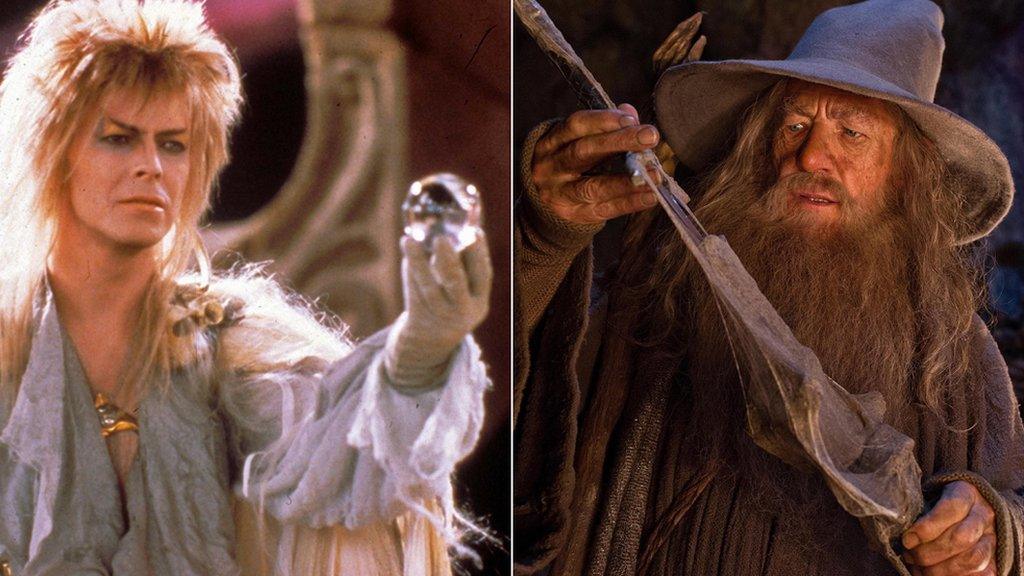
The list of stars who almost starred in Peter Jackson's Lord of The Rings trilogy is almost as long as the films themselves. Nicolas Cage auditioned to play Aragorn, while the part of Gandalf was offered to Sean Connery and Patrick Stewart.
Amazingly, Bowie - star of 1986 film Labyrinth - was also on that list.
Actor Dominic Monaghan, who played the hobbit Merry in the movies, said he had seen the singer enter the casting studio in 1999. "I'm assuming he read for Gandalf. I can't think of anything else he would've read for," he told The Huffington Post, external.
"We approached him," the film's casting director, Amy Hubbard, later confirmed. "I'm pretty sure it was Peter Jackson's idea [but] he was unavailable."

5) He left $2m to his personal assistant

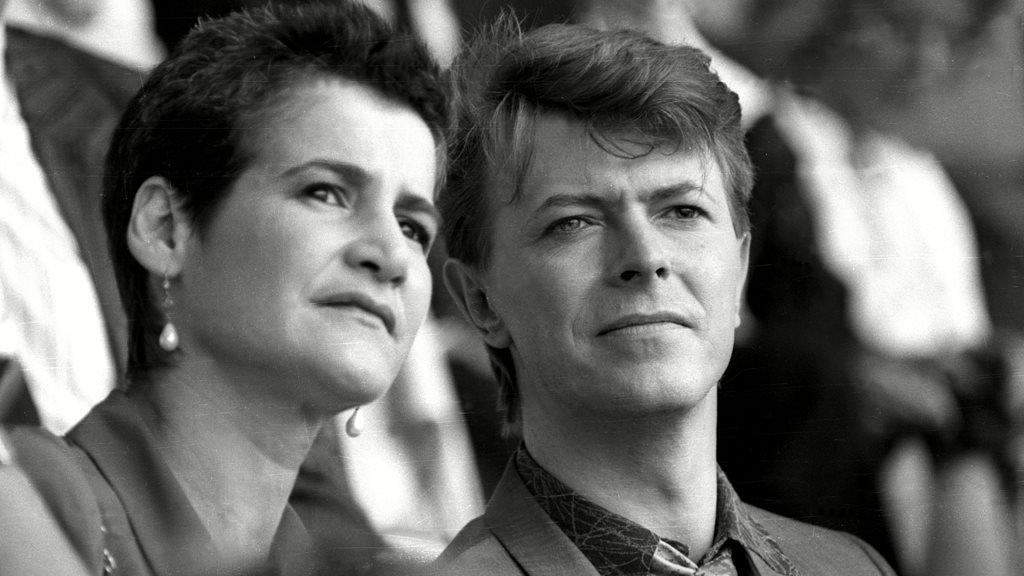
Bowie left an estate of around $100m (£82m) to his wife, Iman, and his two children. But he also gave $2m (£1.6m) to his personal assistant Corinne "Coco" Schwab.
It might seem like an extraordinary act of generosity, but Schwab was his closest confidante for 42 years.
She started working for Bowie in London in 1973 when she answered an advert in the London Evening Standard asking for a "girl Friday for a busy office". Before long, she was his right-hand woman, looking after every aspect of his life, right down to diet. In an early Rolling Stone profile, external, she was depicted going to the market to buy the star some extra-rich milk, sighing, "I've got to put more weight on that boy."
In later years, Bowie called Schwab his "best friend" and credited her with helping him kick his cocaine addiction in 1970s Berlin.
"Coco was the one person who told me what a fool I was becoming and she made me snap out of it," he said.

6) He signed off emails with comedy nicknames

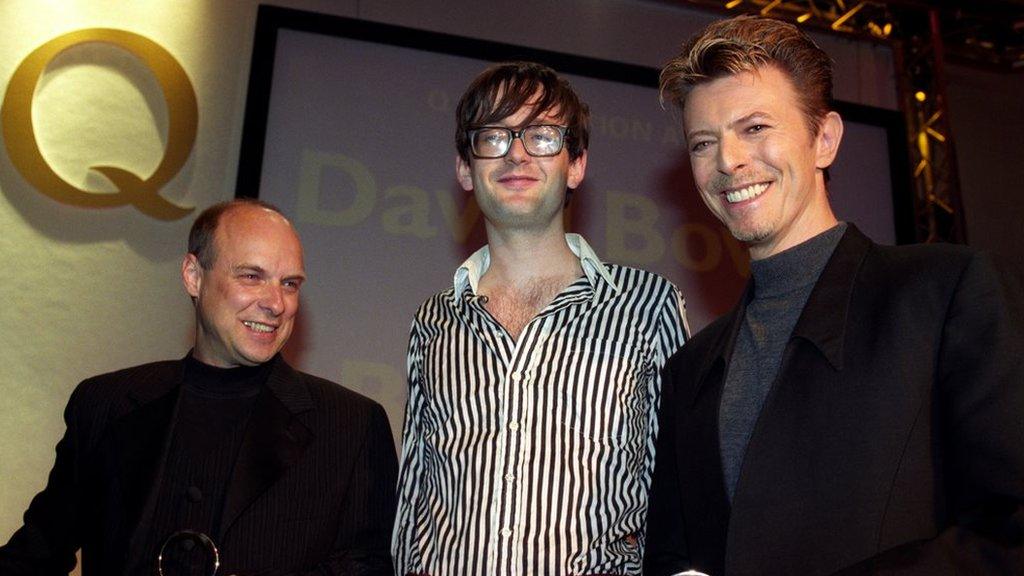
Producer Brian Eno (pictured above left with Jarvis Cocker and Bowie), who worked on Bowie's legendary Berlin trilogy in the 1970s, said he had been in touch with the singer just a week before his death, discussing new projects.
"Over the last few years - with him living in New York and me in London - our connection was by email," he told the BBC last year.
"We signed off with invented names: some of his were Mr Showbiz, Milton Keynes, Rhoda Borrocks and the Duke of Ear.
"I received an email from him seven days ago. It was as funny as always, and as surreal, looping through word games and allusions and all the usual stuff we did. It ended with this sentence: 'Thank you for our good times, Brian. they will never rot'. And it was signed 'Dawn'.
"I realise now he was saying goodbye."

7) Hunky Dory is the fans' favourite Bowie album


In the week Bowie died, 19 of his albums entered the UK chart. Discounting greatest hits compilations and Blackstar (a new release), the record most people turned to was his fourth album, Hunky Dory.
Released in 1971, and featuring the songs Life On Mars, Changes and Oh, You Pretty Things!, it is one of Bowie's most accessible and engaging albums, recorded with the band who would become known as Ziggy Stardust's Spiders From Mars one year later.
Posthumous sales of Hunky Dory were undoubtedly boosted by the song Kooks, which was one of the most widely-shared Bowie songs on social media in the days following his death.
A music hall pastiche, the track finds Bowie musing on fatherhood after the birth of his first son, Zowie. Awkward, warm and funny (not always common qualities in Bowie songs) it includes lyrics like: "Don't pick fights with the bullies or the cads / 'Cause I'm not much cop at punching other people's dads."
Earlier this week, Hunky Dory was voted Bowie's best album by listeners of BBC 6 Music.

8) His version of My Way is best avoided

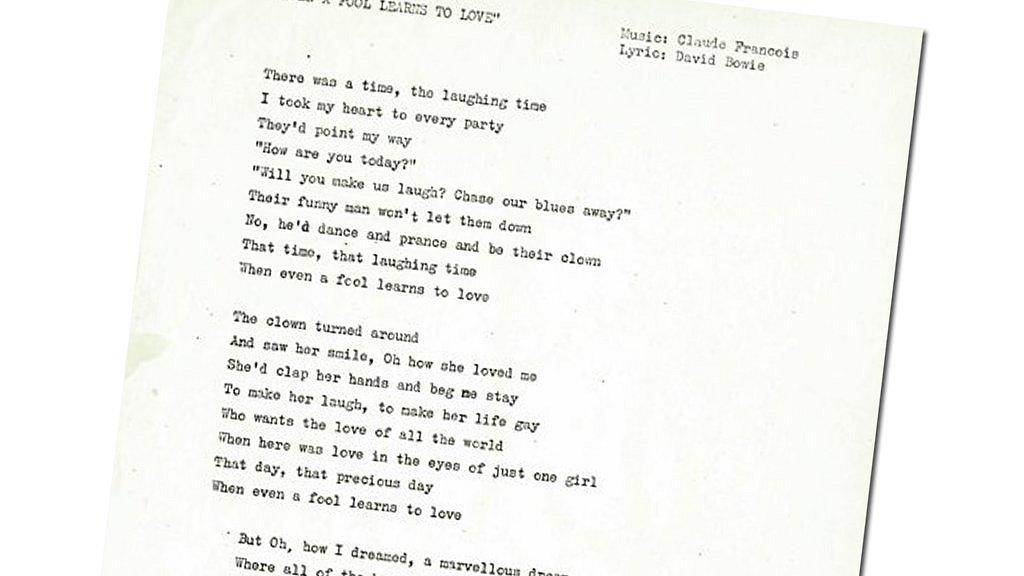
In 1968, David Bowie's music publisher had the then-unknown singer write English lyrics for a song that had been a huge hit in France: Claude François and Jacques Revaux's Comme d'habitude.
"I went, 'yeah, that'd be a good exercise,'" he recalled, "So I wrote a lyric for it, called Even a Fool Learns to Love".
Not having a band at the time, Bowie had simply played the Claude François song at home and recorded his own version over the top, singing in time to the French lyrics.
But Bowie's words were rejected and Paul Anka got the job instead. His version was called My Way, and it became a global smash for Frank Sinatra.
"I was so pissed," said Bowie later. "I thought, 'God, I could have done with that money'. And so I wrote Life on Mars, which was sort of a Sinatra-ish parody, but done in a more rock style."
The demo for Even a Fool Learns to Love was unearthed last year and broadcast for the first time on the BBC Four series The People's History of Pop. It is not, to be brutally honest, worth seeking out.
The story of how it inspired one of Bowie's signature songs can be heard on the Radio 2 documentary Exploring Life On Mars.

9) He gave Lorde the courage to be different

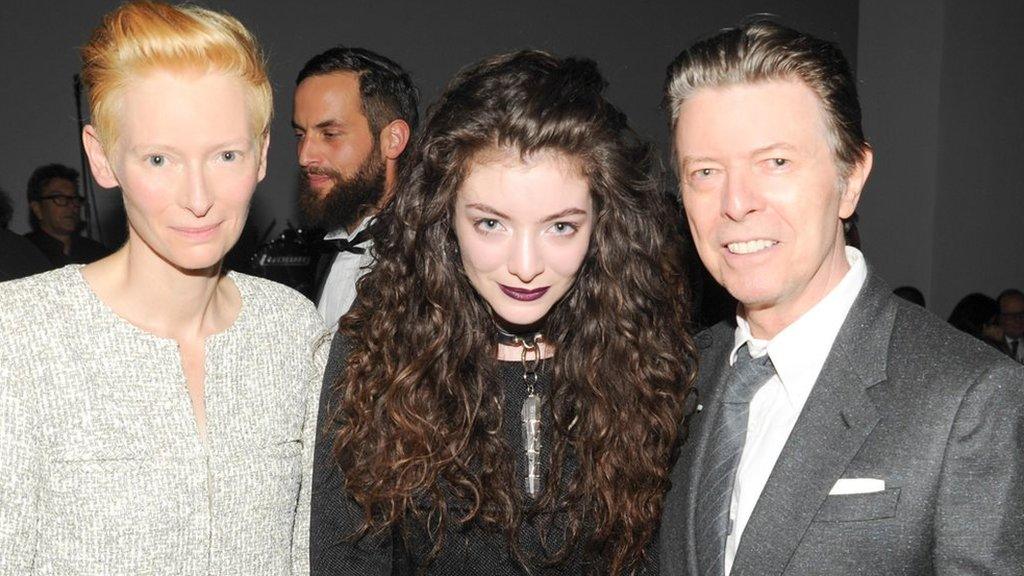
Given the number of musical personas Bowie adopted throughout his 50-year career, it is hard to find an artist he hasn't inspired.
But 20-year-old pop singer Lorde - who performed a tribute to the star at last year's Brit Awards, external and is pictured above with Bowie and Tilda Swinton - revealed the star personally intervened in her career.
Writing on Facebook, external, she recalled how Bowie had asked to meet her after she played a concert in honour of Swinton's birthday in 2013.
"I've never met a hero of mine and liked it," she said. "It just sucks, the pressure is too huge, you can't enjoy it.
"David was different. That night something changed in me - I felt a calmness grow, a sureness.
"I realised I was proud of my spiky strangeness because he had been proud of his. And I know I'm never going to stop learning dances, brand new dances."

10) He didn't think music would be his legacy

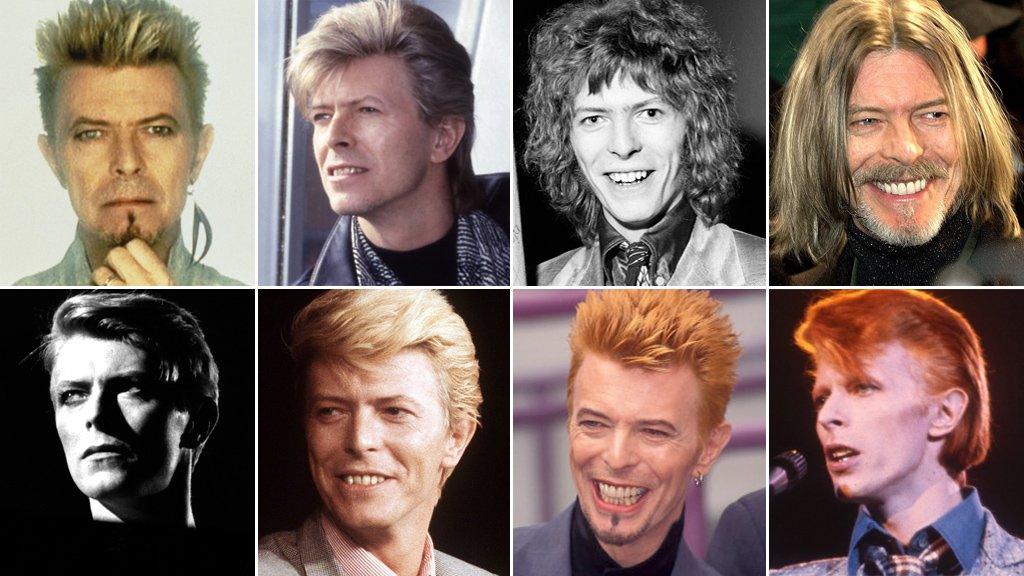
Francis Whately's documentary, Bowie: The Last Five Years gave fans a rare glimpse of Bowie's sense of humour. He was seen larking around backstage, sticking flashing baubles to his face and attacking his band with a plastic crow.
Towards the end of the film, Whately excavated a rare interview, in which the star was asked what he wanted be remembered for.
"I'd love people to believe," he said, "That I really had great haircuts."

Follow us on Facebook, external, on Twitter @BBCNewsEnts, external, or on Instagram at bbcnewsents, external. If you have a story suggestion email entertainment.news@bbc.co.uk, external.

- Published4 November 2016
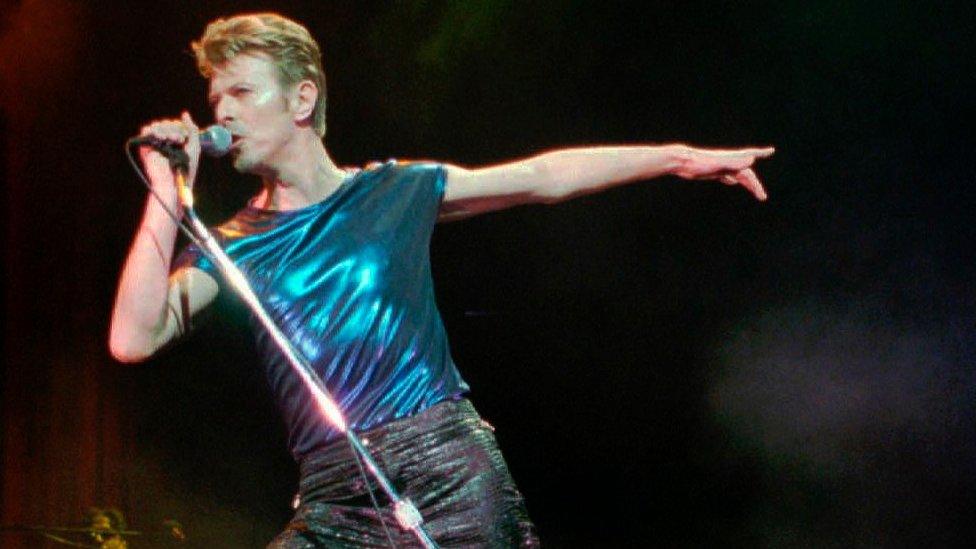
- Published2 November 2016
- Published30 July 2016

- Published11 January 2016

- Published11 January 2016
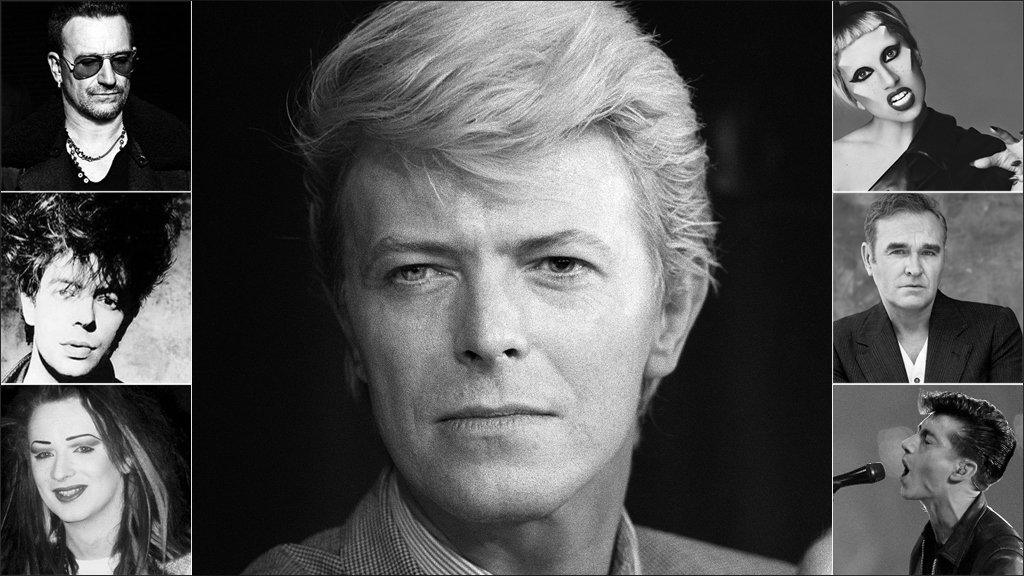
- Published11 January 2016
